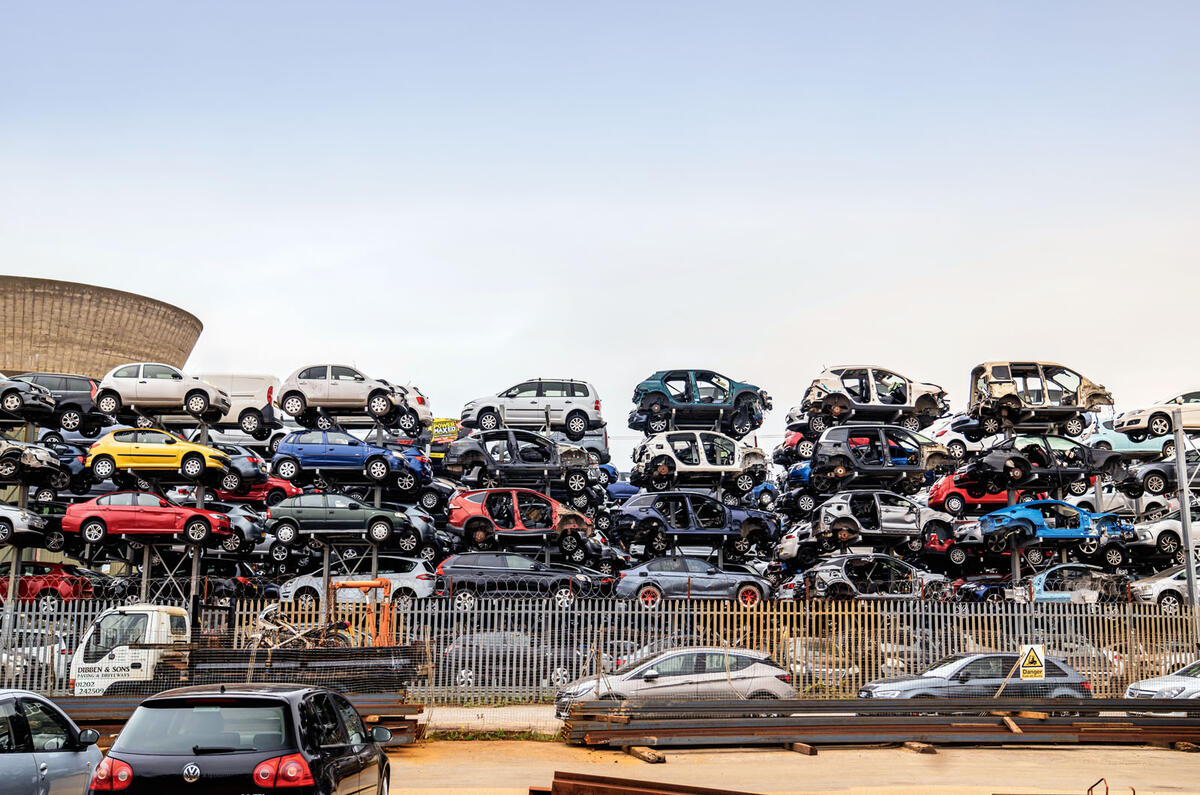'Deproduction’ sounds like a mis-spelling in a biology lesson, but it’s what one vehicle salvaging company has started doing in Poole, Dorset.
Think of it as car production in reverse. Mounted on wheeled carriers, end-of-life cars travel along steel tracks, pausing at a series of four work stations where technicians dismantle them, placing their components in large hoppers. These are then wheeled to another area, where they’re checked, catalogued, cleaned and photographed prior to being sold to bodyshops, garages and the public.
It’s vehicle salvaging with a difference. Rather than mindlessly eviscerating old motors with hydraulic cutters and dropping the disembowelled carcasses into a crusher for bailing, the recycling approach taken by Charles Trent Ltd is methodical and surgical. There’s still an old shell to dispose of, but even this is crushed by a machine powered by solar energy captured on the roof of the firm’s warehouse.
Charles Trent isn’t alone in treating end-of-life vehicles this way. Other firms, such as ASM Auto Recycling of Thame in Oxfordshire, carefully strip, catalogue and sell parts too. The differences are Charles Trent’s strictly timed deproduction lines (a car is stripped in 15 minutes) and, at the end of them, the packaging area, where the checked parts are boxed up.
The idea isn’t new. France’s Indra was among the first to develop and adopt the approach, many years ago. However, Charles Trent is the only salvage firm to have implemented it in the UK.

It has required a huge investment and a massive new warehouse to accommodate the lines, work stations and rows of parts-storage shelves that dwarf anything at Ikea – and Charles Trent isn’t stopping there. Although the Poole plant only opened in August last year, it plans to have six in operation across the UK over the next five years.









Add your comment